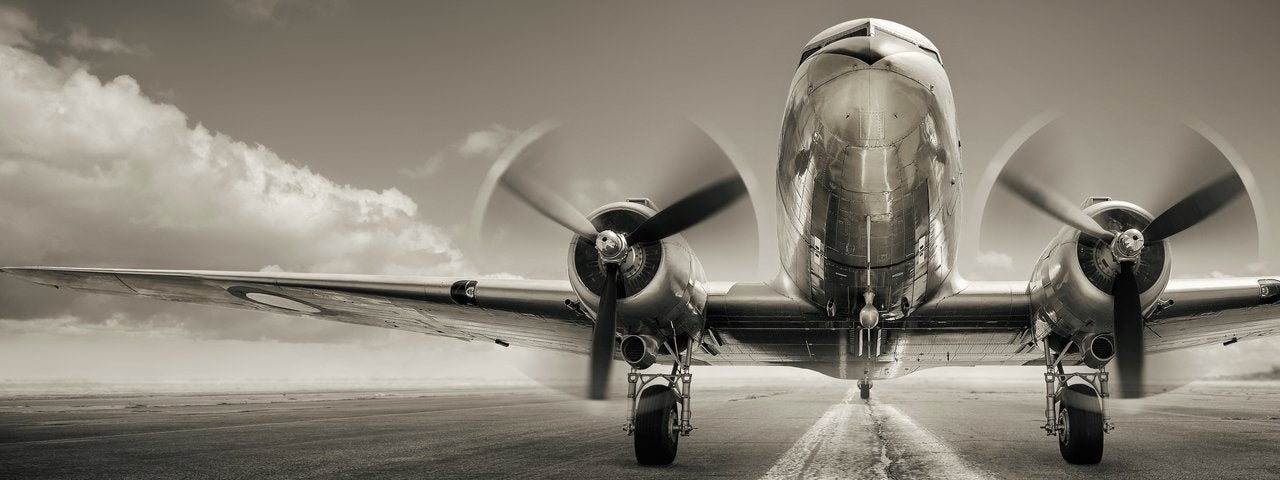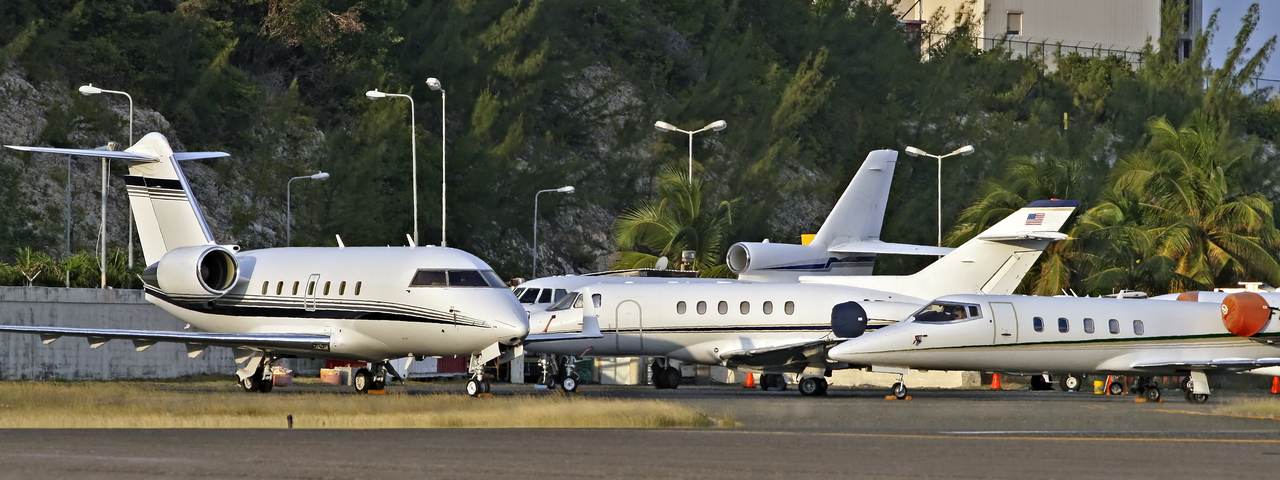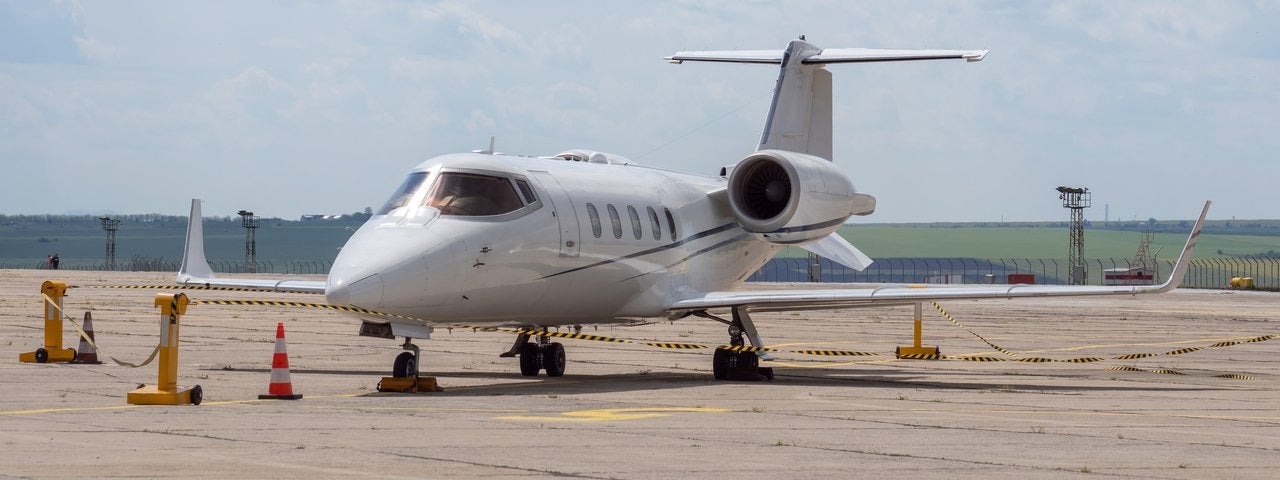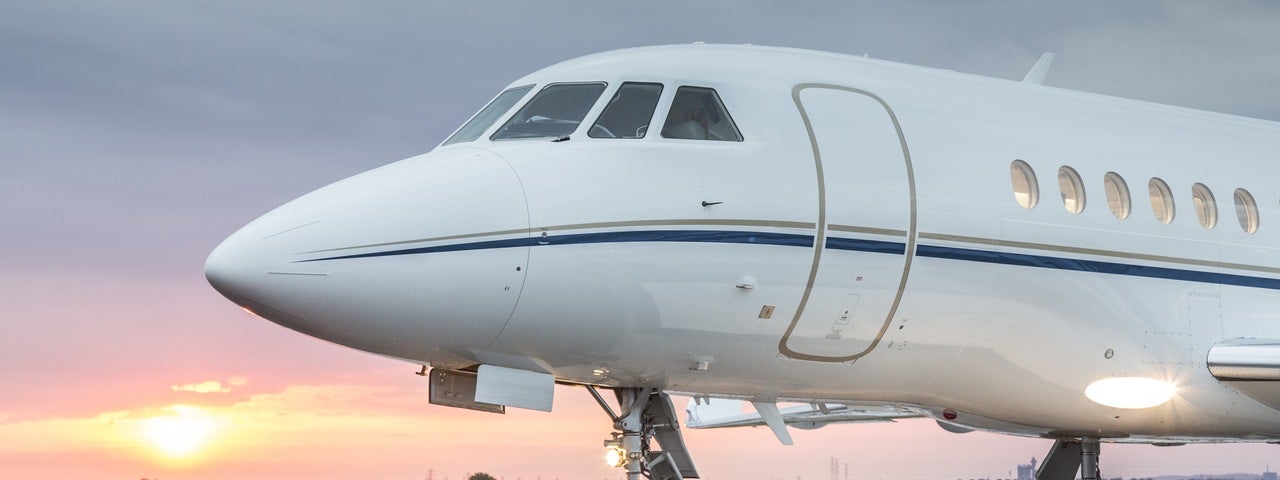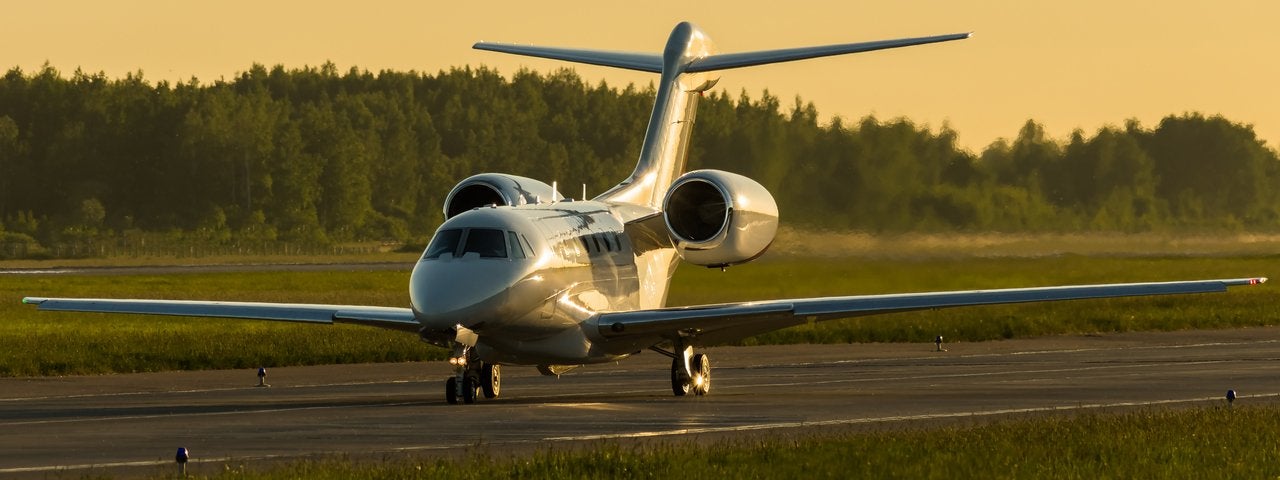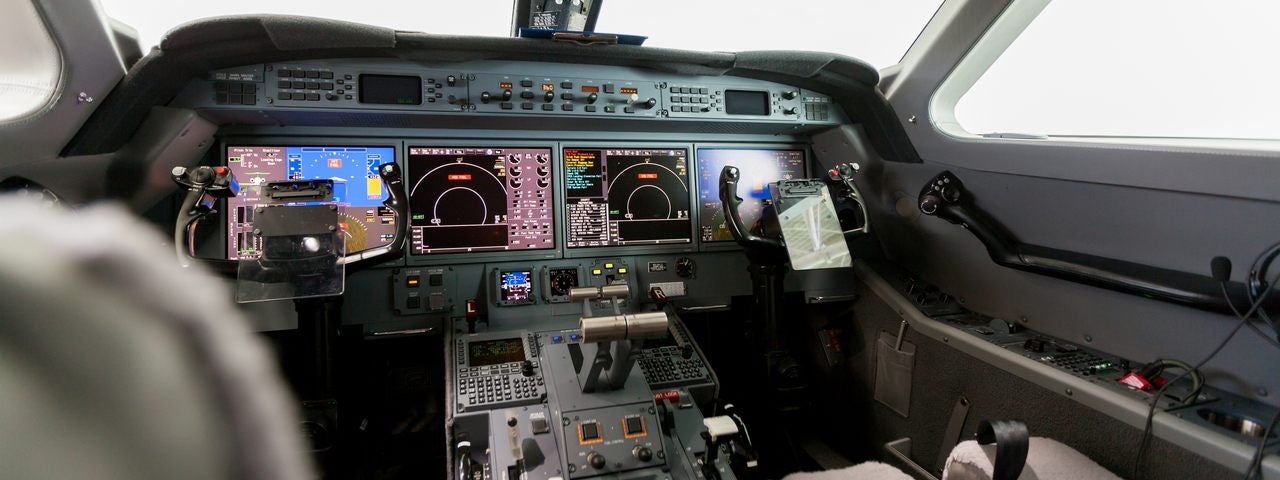The Fastest Private Jets in the World: Past, Present and Future – A Comparative Analysis
Today, private jets can fly at speeds faster than commercial planes. This article analyzes in detail the fastest private jets in the world, the history of private aircraft and the future of the private jet industry, both for personal ownership and private plane rental.
This article offers a look at some of the fastest aircraft ever built, the history of the fastest private aircraft, and then provides an in-depth exploration of the world’s fastest private jets that have been manufactured to date.
Some of the fastest planes to ever exist
Before we look at the fastest private jet in the world, it’s important to understand where it fits, relative to other aircraft and objects. Private planes aside, the fastest commercial aircraft in history is the Tupolev Tu-144, which flew at a supersonic speed of 2,420kph; while the NASA X-15 is the world’s fastest human-crewed jet with a rocket-powered top speed of over 7,408kph. Talking of extraterrestrial speeds, the Parker Solar Probe is considered the fastest spaceship, with an expected top speed of approximately 692,000kph during its flight towards the sun, meaning it could fly from New York to Tokyo in under a minute!
Record holders for speed closer to the ground include the Hennessey Venom F5, the fastest car in the world, with a top speed of 484kph, or approximately Mach 0.392. The fastest bullet, made by Remington Arms, travels at up to 4,548kph, or approximately Mach 3.68; and the Shanghai Maglev holds the record for the world’s fastest train, hitting a speed of 430kph, or Mach 0.348. Tesla’s Roadster electric car has an estimated top speed of 402kph (Mach 0.325); while the fastest Hyperloop test speed achieved is 467kph (about Mach 0.377) in a competition organized by SpaceX. The fastest helicopter, Sikorsky X2, can reach 481kph (Mach 0.3895), while the world’s fastest cruise missile, BrahMos, can reach a speed of Mach 7.
Speed comparison between fastest private jets and other high-speed movers
| Object | Top speed (Mach) | Ranking | Manufacturer |
|---|---|---|---|
|
Tu-144 |
1.96 |
Supersonic |
Voronezh Aircraft Production Association, Tupolev OKB |
|
Boeing 787 |
0.85 |
Subsonic |
Boeing |
|
NASA X-15 |
6.70 |
Hypersonic |
North American Aviation |
|
Hennessey Venom |
0.392 |
Subsonic |
Hennessey Performance Engineering |
|
17 Remington |
3.68 |
Supersonic |
Remington Arms Company |
|
Parker Solar Probe |
560.43 |
Hypersonic |
NASA |
|
Shanghai Maglev |
0.348 |
Subsonic |
Siemens & thyssenkrupp |
|
Hyperloop |
0.377 |
Subsonic |
SpaceX |
|
BrahMos |
7 |
Hypersonic |
NPO & DRDO |
|
Sikorsky X2 |
0.3895 |
Subsonic |
Sikorsky Aircraft |
Historical timeline: the fastest private planes (1980 to present)
Although the history of the private jet can be traced back to the 1950s, we have focused on the modern era that is characterized by the rapid and dynamic development of structural, electrical and mechanical jet design. Let’s look at some of these aircraft to give you a better idea of the advances they made:
-
Dassault Aviation’s Falcon 900 was one of the first modern private jets. It was introduced in 1984, and the unique build of the time is still in operation today. Inspired by the jet’s popular reception, the company launched the Falcon 2000 in 1992, which also gained a good reputation among customers.
-
The aviation industry’s next speed breakthrough came with the Cessna Citation X. Textron Aviation began developing the uniquely designed jet back in 1990, and it was first sold commercially in 1995. In response to positive customer reviews and widespread acceptance, the company built 338 units before announcing the end of production in 2018, with an estimated 309 units still operating around the world.
-
Bombardier Aerospace began developing its Global Express series in 1991 and launched it in 1993, with the first aircraft flying in 1996. The Global Express 6000 is the fastest in the series. An advanced version entered service in 2006.
-
Dassault Aviation introduced the Falcon 7X at the Paris Airshow in 2001, before its first commercial flight took place four years later. FAA and EASA certifications were obtained in 2007.
-
General Dynamics launched the Gulfstream G550 in 2002. Powered by two Rolls-Royce engines, the jet has a range of 12,500km and a top speed of Mach 0.885. In 2009, the company introduced its fastest jet: the Gulfstream G650, which uses state-of-the-art technology to create a luxurious onboard experience. More than 430 units are in service across the world to date, and it’s currently the second-fastest private plane in the world.
-
Capitalizing on the success of its Cessna Citation X, Textron Aviation introduced the Cessna Citation X+ as the world’s fastest private jet in 2012 – a title it retains today. Commercial production of the jet began in 2013, with 27 units operational worldwide so far.
-
The Gulfstream G500/G600 were unveiled in 2014 in response to growing consumer demand for greater cabin space and faster cruise speeds, with improved fuselage and wing designs. An extended-range version of the Gulfstream G650, the G650ER, was also launched, offering improved fuel efficiency and extended range with a heftier price tag.
-
The development of the Cessna Citation Longitude was announced in 2012, and the first flight of this revolutionary mid-size aircraft took place in 2016. It was introduced into the market in 2019.
A historical timeline of some of the fastest private planes available from 1980 onwards
| Model | Year of introduction | Top speed (Mach) |
|---|---|---|
| Dassault Falcon 900 | 1984 | 0.87 |
| Dassault Falcon 2000LX | 1992 | 0.92 |
| Cessna Citation X | 1996 | 0.92 |
| Bombardier Global 6000 | 1996 | 0.89 |
| Dassault Falcon 7X | 2001 | 0.90 |
| Gulfstream G550 | 2003 | 0.885 |
| Gulfstream G650 | 2009 | 0.85 |
| Cessna Citation X+ | 2012 | 0.935 |
| Gulfstream G500/600 | 2014 | 0.925 |
| Gulfstream G650ER | 2014 | 0.925 |
| Dassault Falcon 8X | 2016 | 0.90 |
| Gulfstream G500 | 2018 | 0.925 |
| Bombardier Global 7500 | 2018 | 0.925 |
| Gulfstream G600 | 2019 | 0.925 |
| Bombardier Global 5500/6500 | 2019 | 0.90 |
| Cessna Citation Longitude | 2019 | 0.84 |
| Embraer Praetor 500 | 2019 | 0.83 |
Top 10 fastest private jets in the world
Here we take a look at the world’s top 10 speediest private jets, categorized according to their maximum Mach speed.
1. Cessna Citation X+
Top speed: Mach 0.935
Manufacturer: Textron Aviation
The fastest private jet in the world was built by Textron Aviation. Its incredible speed is boosted by superior wing and fuselage designs, flight controls and engines. The aircraft has a circular fuselage design, with a contoured radome on the nose section giving a better angle of attack during landing. The supercritical aerofoil boosts speed without increasing wave drag on the wings, allowing the Citation X+ to fly close to the speed of sound, and a swept-back wing further improves performance by preventing the formation of shockwave drag forces. This provides extra lateral stability, making the Citation X+ relatively stable and smooth-flying.
The jet’s wings are located in the underbelly rather than cutting through the middle of the fuselage, giving a larger floor surface and extra space to stretch out. Having a larger wingspan (21.09m with a length of 22.43m) gives a high rate of climb and better cruising speeds at high altitudes. The Citation X+ uses its speed brakes and spoiler design to minimize pitching moments. A two-piece, hydraulically powered fly-by-wire rudder gives better control and response; while the plane’s T-tail is highly swept, with horizontal, movable stabilizers for trim.
The jet boasts high levels of fuel efficiency, thanks to its full authority digital engine control (FADEC) system, which automatically sets the fuel mixture and ignition to give the best performance in a range of scenarios. This smart system calculates the RPM and throttle position to control the amount of the air entering the engine, and sets the timing for injection, optimizing engine performance in varying conditions.
Two Rolls-Royce AE 3007C2 turbofan engines remain at the heart of the plane, featuring advanced fan-blade technology and enhanced thrust compared to its predecessors. The fuel-efficient engines allow the plane to reach a maximum range of 6,408km without refueling and give a thrust of 31.29kN each for high speed and range. Light jets are the best and most efficient performers and, compared to the other planes in its class, the Citation X+ is a lot lighter than the Gulfstream G650 or Dassault Falcon 7X. This enables it to accelerate and cruise at impressive speeds using the high thrust of its engines.
Technology-wise, the jet’s G5000 flight deck avionics suite gives the pilot a clear analysis of terrain, weather patterns, and traffic, featuring touchscreen LCD control panels with triple 36cm-landscape WXGA high-resolution displays. Garmin synthetic vision technology allows the pilot to assess terrain when windscreen visibility is compromised due to darkness or weather conditions, enhancing situational awareness with 3D terrain features for an in-depth perspective view.
When flying in darkness, low light or cloudy conditions, pilots rely on the instruments in the cockpit to navigate the plane. Cessna Citation X+’s LinxUs Air system uses real-time diagnostic features to isolate faults and address issues in the flight deck, allowing for prompt adjustments. Additional features include a terrain awareness warning system, traffic collision avoidance system, and emergency locator transmitter.
Onboard entertainment systems, copious legroom and cabin stand-up headroom, an all-glass cockpit, and ultra-high-speed internet enhance the flying experience for both passengers and crew; while real-time communication facilities allow passengers to make calls, send emails and follow meetings when cruising at speeds of Mach 0.935. The jet can take off from and land on runways as short as 1,600m, enabling access to airports that can’t be reached by conventional wide-body commercial aircraft.
An electrically heated windshield, which can be defogged from the inside, increases resistance to bird hits; while the wing and tail are heated with hot air to prevent ice formation.
2. Gulfstream G500/G600/G650ER
Top speed: Mach 0.925
Manufacturer: Gulfstream Aerospace Corporation
Gulfstream Aerospace Corporation, a subsidiary of General Dynamics, manufactures the G500, G600, and G650ER, all of which have a maximum operating speed in the range of Mach 0.925. The G500 and G600 have capacity for 18 passengers, along with one or two crew members.
Powerful engines and efficient design are two key factors in the Gulfstream G500/G600’s impressive performance. Both jets’ wings use a supercritical aerofoil, which reduces drag and vortex for greater speed and better stability at high altitudes. A swept-back wing boosts aerodynamic performance by minimizing the formation of shockwaves, giving better stability at high speed; while the large wingspan gives a better rate of climb, improved performance at high altitude, and the ability to land on short runways. A long, unfettered wing improves airflow for a smoother ride, and the use of composite material in the wing and sections of the fuselage significantly lowers the jets’ overall weight. The nose and all-glass, ultra-large cabin give a desirable angle of attack during landing.
The G500/G600’s fuel-efficient Rolls-Royce BR725 engines are a key contributor to the jets’ impressive speeds. Offering more thrust than the previous generations, the custom-made engines combined with auto-throttle management are maximized for high performance.
Modern technology enhances control and convenience during flight. The G600 uses a fly-by-wire computerized flight control system, which can run both on autopilot and in the presence of the pilot; while the enhanced vision system (EVS) includes a mounted infrared camera, which gives the pilot a better view of the surrounding terrain at night and in poor light conditions. Flight-deck avionics are optimized to reduce the pilot’s workload; for instance, the EVS is routed to the head-up display (HUD) to show data in the pilot’s forward field vision, while virtual reality/synthetic vision 3D color images improve awareness of terrain and obstacles and give a better approach to landing.
A flexible cabin design allows for different configurations for entertainment, meetings, and relaxation, while the Gulfstream Cabin Management System provides a user-friendly interactive interface through which passengers can easily control the cabin’s atmosphere to personalize their onboard comfort. A smartphone can be used to adjust onboard lighting, entertainment options, window shades, and temperature controls, as well as track the progress of the flight.
The G650ER has an incredible range of 13,890km, and, according to the manufacturer, holds the record for the furthest, fastest flight in business aviation history. Unlike its bigger siblings, the G650ER has a maximum capacity of 13 passengers. Upgrades to the original design of the G650 allowed the G650ER to fly its maximum distance at a cruising speed of Mach 0.85. It also has a maximum takeoff weight of 1.8 tonnes more than its predecessor.
The G650ER shares the same fuselage, wing design, and Gulfstream Cabin Management System as the G500/G600, and boasts a fly-by-wire flight control system. Rolls-Royce BR725 A1-12 engines are modified from the BR725s used in the earlier G650; while an auto-throttle system optimizes performance in any given conditions.
The aircraft features a range of technology, including onboard computers for automatic monitoring and minute-by-minute adjustments, plus an enhanced vision system to make it easier to fly at night and land when visibility is poor. The Gulfstream PlaneView II avionics suite provides improved HUD data displays on the flight deck to ease the pilot’s workload.
3. Bombardier Global 7500
Top speed: Mach 0.925
Manufacturer: Bombardier
In April 2020, Bombardier celebrated the completion of its 100th ultra-long-range Global 7500. This aircraft was originally labeled the Global 7000 and was based on the Global 6000’s original design. However, a significant redesign of the wings saw the manufacturer shift towards a new title for the aircraft. These advanced wings are based on a transonic (transonic refers specifically to the air flow around the wing at both subsonic and supersonic speeds) design, which aims to improve efficiency in a number of areas including drag and fuel consumption; this in turn offers improved performance, as well as improved stability during flight. The patented Smooth Flex Wing also improves control of the aircraft, offering what Bombardier claims is “the industry’s smoothest ride”.
At a total length of 33.71m, with a height of 8.14m, the 7500 offers more room to cater for its four-zone design cabin, which measures 18.71m in length, 2.49m in width, and a height of 1.91m. This four-zone design allows for ‘true living’ spaces, with an available Master Suite, full-size bed, dedicated crew suite, as well as a kitchen. The standard design also offers a number of suites as part of its standard interior configuration, including an entrance, club, conference, entertainment, private, and en suite. Each of these areas offer the latest designs, as well as some unique perks, including wardrobes, ultra-large windows, dining tables, and more. Depending on the configuration, a maximum of 19 passengers can enjoy the benefits of this highly advanced cabin.
The aircraft itself is equipped with a cutting-edge flight deck, labeled the Global Vision system, which includes advanced fly-by-wire technology, and a Rockwell Collins avionics system.
An Aerospace Technology article, “Bombardier Global 7500 Business Jet”, describes the following additional features in the cockpit:
“The cockpit features four large liquid crystal display (LCD) screens, head-up display system (HUD), enhanced vision system (EVS) and synthetic vision system (SVS).
“The aircraft features an onboard maintenance system (OMS), datalink, high-speed SATCOM, next-generation cabin management system (CMS) and controller pilot data link communication (CPDLC).
“It also features graphical flight planning and weather radar with enhanced functionality such as wind-shear detection. It is equipped with the latest performance-based navigation features, including a wide-area augmentation system (WAAS), localizer performance with vertical guidance (LPV) approach and area navigation (RNAV).”
The Global 7500 is also able to achieve a maximum speed of Mach 0.925, thanks to its General Electric Passport engines, which Bombardier describes as a unified propulsion system that includes an advanced health-monitoring system. This health-monitoring system offers greater reliability and efficiency, while also reducing emissions and maintenance costs. These engines offer a maximum thrust of 84kN, and when combined with the fuel efficiency of the rest of the aircraft, travelers can enjoy a maximum range of 14,260km.
4. Cessna Citation X
Top speed: Mach 0.92
Manufacturer: Textron Aviation
The world’s third-fastest private plane reaches a top speed of Mach 0.92 and can accommodate 13 people, including two crew members. It boasts a maximum range of 6,410km and a maximum takeoff weight of 16.4 tonnes. Bearing strong resemblances to its successor, the Cessna Citation X+, the Cessna Citation X is an earlier example of Textron Aviation’s state-of-the-art designs. The jet features a swept-back wing with supercritical aerofoil and high-performance winglets that boost aerodynamic performance on a hot day and at high altitudes; plus a highly swept-back T-tail. It also boasts two Rolls-Royce AE 3007C engines, which were later modified to AE 3007C2 for the Citation X+. These are controlled by a FADEC system, which increases fuel efficiency and allows the jet to go further and faster, without exceeding the engines’ performance limitations.
The Cessna Citation X uses a Honeywell Primus 2000 avionics suite which, while not as advanced as that of the Citation X+, gives easy usability through a five-screen display. It also boasts an enhanced ground proximity warning system, and a traffic alert and collision avoidance system (TCAS II). An electronic flight bag cockpit iPad gives the crew easy access to terminal charts, approaches, arrivals, departures, and company manuals.
The aircraft boasts a wide cabin layout, allowing for a wider range of configurations and giving passengers more space. Designed for unbroken connectivity, onboard Wi-Fi allows passengers to communicate with the outside world in real-time, as though they were working in a normal office. The jet’s high-altitude climb level minimizes turbulence and improves the overall smoothness of the flight.
5. Dassault Falcon 7X/8X
Top speed: Mach 0.90
Manufacturer: Dassault Aviation
Next on the list is French company Dassault Aviation’s Falcon 7X, which operates at a maximum speed of Mach 0.90. With 12 passengers and two crew members on board, the jet can travel a maximum range of 11,019km and carry a maximum takeoff weight of 31.8 tonnes.
The Dassault Falcon 7X’s high transonic swept-back wing allows it to travel at faster speeds and a higher altitude while allowing a slow approach for landing. It also features double-slotted Fowler flaps and leading-edge slats, which improve the overall aerodynamics. A tri-jet engine configuration ensures the aircraft travels faster and further, using Pratt & Whitney PW307A turbofan engines for greater efficiency and thrust.
Fly-by-wire technology maximizes the jet’s ergonomic performance, with a side-stick controller similar to those used in fighter jets allowing the pilot to steer the direction of the plane. The flight deck is equipped with a Falcon EASy II system with HUD for pilot convenience, and the digitalized flight control improves handling for a smoother flight.
6. Bombardier Global 5500/6500
Top speed: Mach 0.90
Manufacturer: Bombardier
The second entry from Bombardier on our list actually has two models of aircraft. The Bombardier Global 5500 and 6500 are both upgrades to its original 5000 and 6000 models and draw upon advances made in the design of the Global 7500. Both of these aircraft aim to improve the range, speed, and control of their predecessors, while also offering unprecedented, glamorous cabin space, and an incredibly smooth ride.
With an overall length of 29.5m and a height of 7.8m, travelers get to enjoy a spacious cabin at 12.41m in length, 1.88m in height, and 2.41m wide, which is home to three of Bombardier’s meticulously designed units. These include a kitchen, club, and conference suite. These cabins offer the greatest comfort with their Nuage seats and chaises, which have been designed to offer a level of comfort that’s comparable to the high-end seating you might find in your own home. Passengers in the cabin can also take advantage of the latest in-flight internet connectivity to enjoy 4K quality entertainment experiences. This is all thanks to Bombardier’s Ka-band technology, a satellite solution that offers internet access that’s up to 35x faster than similar systems.
If you’re more interested in the performance specifications of this aircraft, the Global 5500 offers a maximum range of 10,927km, made possible by its Rolls-Royce Pearl 15 engines. These engines offer the aircraft an incredible 67.3kN in thrust, but not at the expense of efficiency or a quiet flight.
As with many of the other newer Global aircraft on this list, the 5500 features the Bombardier Vision flight deck, a system that contains the industry’s first-ever combined-vision system which collates enhanced and synthetic system images to give pilots a clearer view of the world around them. Other avionics which help power this aircraft include the MultiScan Weather Radar, Controller Pilot Data Link Communications, and Datalink systems.
Naturally, there are a number of differences between the Global 5500 and 6500. The first is the slightly larger length of the 6500, coming in at about 80cm longer than the 5500, which translates to slightly less tactual cabin space. The other major difference that most buyers will take notice of is the 6500’s max range of 12,223km, thanks to its larger fuel capacity. Otherwise, many of the features and systems are the same as those of the Global 5500.
7. Bombardier Global 6000
Top speed: Mach 0.89
Manufacturer: Bombardier
The Bombardier Global 6000 is a large-cabin business jet that can fly with 19 passengers and four crew members on board. Its speed and range are comparable to other fast jets – its top speed is Mach 0.89 and it ranks third for its maximum range of 11,112km.
The Global 6000 is made using lightweight carbon-fiber materials to improve fuel efficiency, while its wing and fuselage design contribute to remarkable overall aerodynamic performance. The jet has a swept-wing design with supercritical aerofoil, while winglets and a swept-back T-tail enhance aerodynamic stability at high speeds.
Onboard technology includes a HUD, giving the pilot easy access to data; a multifunctional touch-screen display; and a maintenance and diagnostic system to promptly isolate and correct issues in the flight deck. Three flight management systems – an inertial reference system, an Artex B406 emergency locator transmitter, and a traffic avoidance warning system – help the crew to plan approaches, landings, arrivals, and departures. The cabin features a global office with a local area network, high-speed internet connection, and an Airshow ASXi Interactive Flight Information System with a moving map and flight information display. Passengers can customize the atmosphere in the cabin to their desired comfort levels.
8. Gulfstream G550
Top speed: Mach 0.885
Manufacturer: Gulfstream Aerospace Corporation
Another creation of General Dynamics’ Gulfstream, the Gulfstream G550 sits in eighth place with a maximum speed of Mach 0.885. Two Rolls-Royce BR710 CF-11 turbofan engines provide a maximum of 68.4kN of thrust to this aircraft. These engines were first run in 1995, before entering into service in 1998. They are powerful enough to carry 19 passengers (although most configurations feature space for 12-14 people), and two crew members, with a maximum takeoff weight of 4.1 tonnes, while flying a maximum range of 12,500km.
When exploring the interior of the aircraft, passengers can find up to four living areas, depending on the configuration. This jet, once the flagship plane in its class, offers forward or aft galleys, dual lavatories – also in a forward and aft configuration – baggage areas, conference space, 68.6cm-wide seats, and divans that convert into sleeping spaces.
In terms of entertainment, passengers can take advantage of the Gulfstream Cabin Management System, which has touchscreen controls or can be configured via a wireless device using a free app that you can easily download from the Google and Apple app stores.
The cockpit features the award-winning PlaneView avionics system. This includes a synthetic vision system called the SV-PFD, which integrates a variety of information, including terrain, obstacles, runway, and existing flight data to allow for greater night-time flight. Other great features include XM Weather, ADS-B surveillance technology, and other tools, providing pilots with the cutting-edge systems that are part of the modern flying experience.
9. Cessna Citation Longitude
Top speed: Mach 0.84
Manufacturer: Textron Aviation
Textron Aviation’s Cessna Citation Longitude is the last Cessna on the list. It provides a maximum operating speed of Mach 0.84, a range of 6,482km, and a takeoff weight of 17.9 tonnes. It can carry a maximum of 12 people on board, including two crew members.
Two Honeywell HTF7700L engines power the Citation Longitude, each giving a thrust of 33.8kN. Its wing design is very similar to that of the other Citation models, located in the underbelly with a highly swept-back T-tail. The jet’s engine power and wingspan give it impressive speed, performance, and range.
The plane’s cabin has easy access to the baggage area, which is pressurized and warmed with hot air. It is also designed to be one of the world’s quietest cabins, with exclusive soundproofing techniques that are unique to this plane’s super-mid-size cabin. If you’re looking for a more comfortable experience, this cabin also offers 11% more legroom than other planes in the same class.
Innovative onboard technologies include an automatic ice-detection system, which alerts crew members when ice starts to form either inside or outside the cabin. The flight deck features brake-by-wire and fly-by-wire rudders and spoilers, along with two autonomous hydraulic systems that ensure redundancy. Flight deck avionics include the company’s Garmin G5000 system, which offers Garmin Synthetic Vision Technology, touch-screen controls, HUD, and enhanced vision.
10. Embraer Praetor 500/600
Top speed: Mach 0.83
Manufacturer: Embraer
The very last private jet we are featuring on our list is the mid-size business jet, the Embraer Praetor 500, and the larger Embraer Praetor 600, replacements for the Legacy 450 and 500 aircraft. The Praetor 500 can carry a maximum of nine passengers, while the 600 maxes out with 12 passengers on board. These two aircraft are roughly a meter different in length (19.69m versus 20.74m), with the cabin lengths following a similar difference (7.32m versus 8.18m) while offering the same width and height (2.08m by 1.83m). However, differences in the cabin design allow the slightly larger Praetor 600 to seat three more people.
When it comes to the sheer thrust helping these two aircraft reach Mach 0.83, they both feature the same two Honeywell HTF7500E engines. However, the maximum output of the Praetor 500 sits at 29.1kN, while the Praetor 600’s engines have been tuned to offer 33.5kN. This is necessary to make up for the 2.4-tonne difference in weight between these aircraft models. These engines provide the Praetor 500 with a maximum range of 6,186km, while owners of the Praetor 600 get an aircraft capable of 7,441km.
If your decision between the Praetor 500 and 600 is affected by what’s inside the cabin, both aircraft are remarkably similar, with tables that you can easily stow away, and plush seats that can fold out into comfortable, fully flat beds. Both aircraft also offer exceptional in-flight internet access, thanks to their Ka-band technology, with the Honeywell Ovation Select Cabin Management Suite providing entertainment of a similar standard.
If you’d like to know more about the speeds of some of the larger private jets available, you can find out all you need to know in this article about the fastest commercial airliners in the world today. Or if you’re more interested in the prices of private jets, you can learn about how much it costs to buy a private jet in our blog, and discover some of the most lavish private jet interiors in this piece on the cost of a custom private jet interior.
The future of aviation and private jets
Faster jets
This trend towards faster private jets can already be seen in Cessna’s focus on increased speed and range with the Citation X and X+. The Bombardier Global 6000 also travels close to the speed of sound, and its manufacturer is set to reveal exciting developments with its upcoming Global 7000 and Global 8000 models. Major competitors, including Dassault, Gulfstream, and Cessna, are also working on boosting the speed of their jets to supersonic or hypersonic levels in response to emerging needs.
But things don’t stop there. The fastest private jets of the future that will fly at either supersonic or hypersonic speeds may not come from these aerospace juggernauts. In response to a growing demand to fly faster and more conveniently, other developers have joined the push to breach the super and hypersonic gap. Here are some of the superfast jets that will come from other manufacturers in the near future.
-
NASA X-59 X-plane/Lockheed Martin X-59 QueSST – This new plane, built by Lockheed for NASA, will reach a top speed of approximately Mach 1.5, and a cruising speed around Mach 1.4. While not a passenger aircraft, many of the developments, such as its Quiet SuperSonic Technology, mark a huge leap forward for supersonic aircraft. The cost of the actual plane has yet to be released, but the entire project had a development budget of $247.5 million (AED 909 million).
-
Aerion AS2 – This is the first supersonic passenger plane on our list, and will have a maximum capacity of 10 people. Aerion Corporation has built the Aerion AS2 with sustainability in mind – its supersonic journeys will be powered by a synthetic fuel. This aircraft is priced at $120 million (AED 441 million) per unit, with production for the market expected to start in 2023.
-
Boom Overture – The Boom Overture takes things to the next level with room for up to 88 passengers, depending on the configuration of the aircraft. Manufactured by Boom Supersonic, it’s expected to fly at a maximum speed of Mach 2.2, and be 100% carbon-neutral. The Overture is estimated to cost around $200 million (AED 735 million), with the first prototype launching in 2022, and production starting in 2025.
-
Spike S-512 – The S-512 will fly at a maximum speed of Mach 1.6, and carry a maximum of 18 passengers. Created by Spike Aerospace, it features its own proprietary Quiet Supersonic Flight technology and will offer an innovative Multiplex Digital Cabin design. Expect to pay in the region of $100 million (AED 367 million) after this aircraft completes its initial tests, which start in 2022. It is set to take to the skies in 2028.
These are just some of the incredible innovations that are taking place in the jet market, but there are other airborne innovations also taking place with other flying aircraft.
Flying concepts in R&D
Key concepts being researched and developed among the major aviation players include pilotless or unmanned aerial vehicles (UAVs), blended wing body design, and electric planes.
The concept of the pilotless jet is gaining critical focus, with a view to reducing overall flight costs by eliminating the need for outlays such as pilot salaries, daily stipends and hotel layovers. The growing demand for air travel means companies are having to invest in training more pilots and crew members – an estimated 200,000 pilots are currently in employment, with the number set to increase to 560,000 in the next 20 years. By developing self-flying aircraft, airlines can help to address the future demand for pilots, as well as potentially improve flights by reducing the margin for human error.
Other concepts gaining pace concern more efficient aircraft design. Blended wing body design is an innovative concept that sees the wing blend smoothly into the wide flat fuselage. The advantage is that the fuselage contributes to most of the lift generated, while the wings provide balance and stability. By supporting a smaller surface area, the design helps to reduce drag better than the usual cylindrical fuselage, resulting in greater fuel efficiency and range.
Electric planes are also a hot topic of R&D, as manufacturers focus on electronic aviation in response to growing concerns about the aviation industry’s overall carbon emissions. Government and international agency regulations add to the pressure to develop environmentally friendly designs. Prototypes being tested include the Pipistrel Alpha Electro, e-Genius, E-Fan X, and NASA X-57, with the greatest challenge being to achieve sufficient range and efficiency. For instance, the Swiss solar-powered aircraft Solar Impulse 2 could only carry one passenger and its speed was compromised by the low-energy output of its solar panels. Additionally, solar-powered planes can’t fly at night or on gloomy days due to the absence of sunlight; and carrying a battery to store extra charges isn’t viable, as this would increase the plane’s overall weight and limit its speed and range.
Many innovative ideas are being developed to increase speed and range, such as a novel engine that incorporates operating principles from both the rocket engine – which can reach supersonic speeds and high altitudes where there’s minimal drag – and the standard jet engine. The existing scramjet design incorporates the idea of using a rocket engine; however, it’s difficult to decelerate from supersonic speed to land on conventional runways. Merging standard jet engine principles with the rocket engine may solve the problem, as the former could help start the jet and climb to a high altitude before the latter is switched on to achieve supersonic speed.
Finally, vertical take-off and landing (VTOL) technology is set to supersede the existing systems used in military fighter jets, allowing private aircraft to take off and land on a small stretch of runway.
Future technologies and private jet development
Optimization of designs and structures is becoming more cost-effective through the use of 3D printing. Researchers are now free to build prototypes in the lab and test designs iteratively, making it easier and cheaper to develop aerodynamically stable, functionally efficient designs. Additionally, advancement in the use of composite materials is expected to result in aluminum alloys and other metals such as titanium being replaced with lightweight, high-strength materials such as glass fiber, Kevlar, and carbon fiber. The aviation industry is heading towards lightweight, structurally rigid, and highly durable designs at much affordable cost. With lower weights, better engine optimization, and 3D printing technology, future jets will be able to transport passengers faster and further.
Importantly, the use of 3D printing can significantly lower costs by cutting labor costs and improving cycle time, as designs are quickly assembled by machines. It also allows more complex and intricate designs to be fabricated in plants, meaning future private jets may look a lot different in airframe and fuselage.
The development of supersonic or hypersonic business jets would significantly cut travel times. Early examples of supersonic civilian aircraft include Concorde and Tu-144; however, high operation costs, the sonic boom, and decrease in demand after the crash of the Air France Flight 4590 – the only Concorde crash ever to take place – eventually led to the Concorde’s retirement. As explained above, researchers are now trying to develop sustainable technology for supersonic and hypersonic aircraft, with NASA X-planes and other supersonic aircraft designed to overcome the problem of sonic boom and hit a maximum speed over more than Mach 1.0 in relative silence.
Innovative ‘intelligent airports’ are in development to support the future fastest private jets, reducing human involvement in traffic control. The electronic charting and flight management systems already present in many private jets illustrate a move towards this smart technology.
Finally, air-taxi-hailing services have the potential to reduce traffic congestion, cut travel time and increase productivity in the world’s busiest cities. However, a new traffic control system is needed for the concept to work on a large scale.
Technologies that could impact private jet development
With increased environmental awareness and worldwide clean-energy initiatives, reducing carbon emissions remains a challenge for aircraft designers, and will continue to dominate the aviation industry as the key performance indicator for aircraft. The use of clean and renewable fuel is a potential solution; however, more research is needed to achieve the desired speed and performance using clean energy. Jet aircraft that are powered by electricity are advancing, with aircraft such as Alpha Electro and MagniX’s eCaravan showing how far we’ve come. However, these electric planes still have their limitations when compared to non-electric aircraft. For example, they currently can’t provide the expected speed or range, while the size and weight of electric batteries and solar panels are also limiting factors.
Nuclear or hydrogen energy is another promising clean fuel. A small amount of this fuel can provide a huge amount of energy, reducing the overall weight of the aircraft, while its high efficiency guarantees extra miles without the need for continuous refueling. Nuclear energy is already used by the US Navy to power massive aircraft carriers and submarines, with the well-developed nuclear fusion method offering more energy per unit mass than any other conventional fuel. The thrust exerted by the combustion of such fuel can also significantly improve an aircraft’s range, making supersonic and hypersonic speeds a possibility.
Radical developments in artificial intelligence (AI) mean pilotless aircraft are no longer the stuff of sci-fi movies. But while a fully pilotless system could lower operating costs, there are also security concerns, such as cyber-attacks during which criminals could gain control of a flight from the ground and blackmail those on board. In light of military drones being hacked or electronically jammed and forced to land, it’s feared that terrorists could remotely hijack a pilotless plane without even being traced at the airport. Technology can also fail without warning, such as when a Tesla self-driving car crashed during a drive, killing the driver. Many experts believe AI technology should focus on reducing the need for onboard staff rather than fully eliminating them while allowing for human intervention during an emergency. This would still reduce operating costs while limiting the risk of cyber-attacks.
The take-home message
From the findings in this report, one thing is clear: the private jet industry isn’t slowing down. As technology evolves and provides increasingly efficient ways for airplane manufacturers to create faster aircraft, traveling around the globe via plane rental will become quicker and easier than ever before.
Book your next private charter flight with ACS
If you’re looking to travel at the forefront of private jet and charter flight technology, Air Charter Service (ACS) has you covered. Want to know more? Read our blog all about the cost to charter a private jet, and contact your local team to discuss your bespoke private plane charter.



